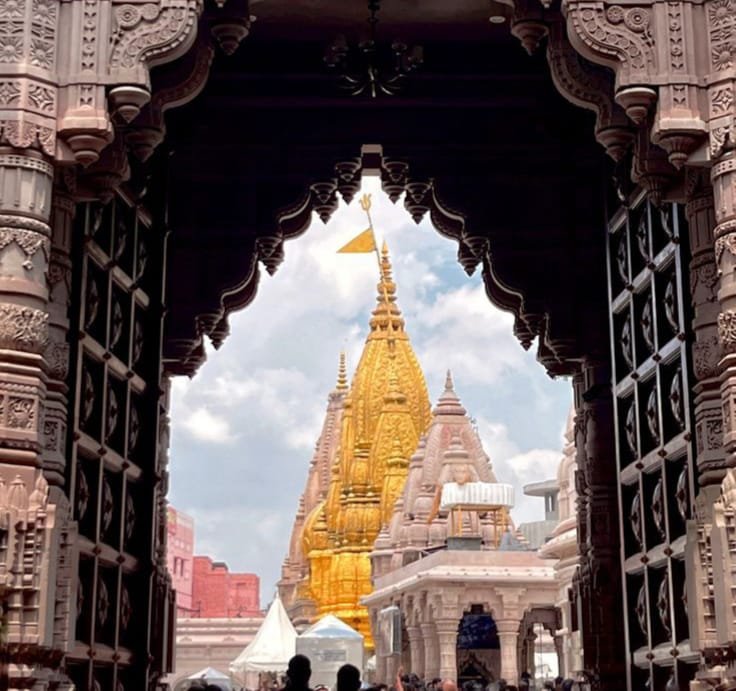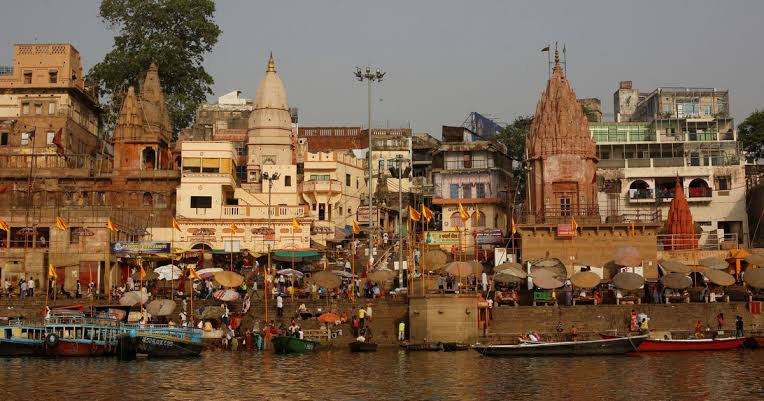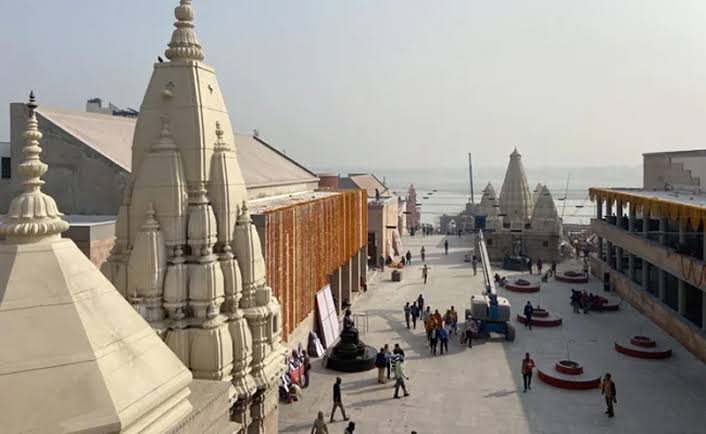Kashi Vishwanath Dham, located in the heart of Varanasi, is not simply a temple but a hub of spiritual and cultural significance that attracts millions of pilgrims and tourists each year. Dedicated to Lord Shiva, this ancient temple is one of the twelve Jyotirlingas and occupies a valued place in Hindu religious activities. Over the years, the government of Uttar Pradesh has undertaken various steps to modernize and beautify the temple complex, boosting both its spiritual ambiance and infrastructural offerings.

In accordance with these efforts, the 13th meeting of the Kashi Vishwanath Special Area Development Council was held recently under the chairmanship of Divisional Commissioner Kaushal Raj Sharma. The summit led to numerous major decisions, aimed at improving guest experience, security, and overall management of the temple complex. These steps would not only make Kashi Vishwanath Dham more accessible but also protect the safety of visitors, especially during peak seasons when the temple sees a tremendous flood of devotees.
In this piece, we go into the intricacies of these new projects and their significance in developing Kashi Vishwanath Dham into a world-class holy destination.
The Sacred Importance of Kashi Vishwanath Dham
Before getting into the precise infrastructural changes, it is vital to appreciate the religious and historical significance of Kashi Vishwanath Dham. Located on the western bank of the Ganges River, the temple is believed to have been first completed in 1490 CE. Over the years, it has undergone multiple renovations, notably after sustaining destruction by successive invasions. The current temple complex was erected in 1780 by the Maratha monarch Ahilya Bai Holkar of Indore, and it continues to be a focus of religious activity in India.
Pilgrims from all areas of the world flock to Kashi Vishwanath Dham to offer their prayers and seek blessings from Lord Shiva. The temple is regarded the focal point of salvation, where believers think they can gain release from the cycle of life and death. Along with its religious value, the temple is noted for its gorgeous architecture, exquisite patterns, and divine aura that captivates every visitor.
Given the temple’s significance, the necessity for modern infrastructure that matches its hallowed nature has been a focus for both the government and the temple administration. The 13th meeting of the Kashi Vishwanath Special Area Development Council lay the foundation for various enhancements that attempt to achieve a balance between tradition and modernity.
Installation of a Large Gate at Saraswati Phatak
One of the most significant choices to come out of the recent conference was the idea to erect a massive new gate at Saraswati Phatak. Located near Gate No. 2, this entry is a vital access point for pilgrims accessing the temple complex. The new entrance, sponsored through Corporate Social Responsibility (CSR) activities, is meant to enhance the overall aesthetics of the temple complex while permitting better crowd management, especially during festivals and other significant events.

This gate will not only improve the look and feel of the access point but also contribute to better security and organization. With an increasing number of pilgrims visiting the temple each year, crowd control has become a crucial concern, particularly during high footfall seasons like Sawan (the holy month dedicated to Lord Shiva), Mahashivaratri, and other Hindu festivals. The wider gate at Saraswati Phatak will allow greater space for devotees to pass freely, minimizing congestion and maintaining a smooth flow of foot traffic.
Moreover, the erection of this gate is a part of the bigger master plan for the redevelopment of Kashi Vishwanath Dham, which aims to provide a more expansive and accessible setting for visitors while conserving the temple’s purity. The use of CSR money for this project shows the engagement of business companies in maintaining India’s cultural legacy, so encouraging a sense of shared responsibility in the preservation and development of sacred monuments.
CCTV Cameras to Enhance Security
In addition to the construction of the new gate, one of the most crucial choices made during the 13th meeting was the installation of CCTV cameras across numerous major sites of Kashi Vishwanath Dham, including the newly built gate at Silk Lane (Silko Gali). These security measures are being made to safeguard the safety and protection of the hundreds of pilgrims that visit the temple daily.

The decision to deploy CCTV cameras from Gate No. 4 and 4B to the temple entrance and other strategic sites is a vital step toward enhancing the temple’s security infrastructure. These cameras will allow temple authorities to watch high-traffic areas, detect potential security concerns, and verify that safety rules are adhered to at all times. Additionally, CCTV footage will assist with crowd control, allowing the temple management to promptly respond to any difficulties that may emerge, especially during high visitor periods.
This endeavor is particularly significant in view of the expanding number of visitors and pilgrims visiting the temple, many of whom travel from around the globe to pay their respects. The adoption of CCTV surveillance would not only provide a safer environment but also instill trust in guests, knowing that strong steps are in place to protect them.
The placement of these cameras fits with the greater security measures being conducted in and around Kashi Vishwanath Dham. Over the years, there has been a great focus on strengthening security without affecting the spiritual environment of the temple. The additional CCTV systems will further strengthen these efforts, ensuring that both the spiritual and physical well-being of guests are prioritized.
Launch of the Vedic Center at Kashi Vishwanath Dham
Another key statement made during the meeting was the proposal to operationalize the newly constructed Vedic Center within Kashi Vishwanath Dham. This Vedic Center, which is shortly to commence operations, will be dedicated to the promotion and teaching of Vedic knowledge, including ancient scriptures, rites, and ceremonies. The allocation of the center will be based on a Memorandum of Understanding (MoU), and tenders for its operation will be issued in the near future.
The foundation of the Vedic Center is an important cultural milestone for Kashi Vishwanath Dham, as it attempts to revitalize and perpetuate the practice of Vedic traditions. This center will serve as a place of study for scholars, priests, and devotees who are interested in increasing their grasp of Vedic philosophy and rituals. It will also provide an opportunity for younger generations to interact with their spiritual heritage in a meaningful way.
The Vedic Center is planned to play a vital role in the religious and educational landscape of Kashi Vishwanath Dham, complimenting the temple’s standing as a center of spiritual enlightenment. By developing a greater understanding of Vedic teachings, the center will contribute to the preservation of India’s ancient wisdom and traditions, ensuring that they continue to thrive in current times.
E-Tendering for Café Building and Virtual Reality Services
As part of the ongoing efforts to expand tourist services at Kashi Vishwanath Dham, the council considered the re-issuance of e-tenders for the management and operation of the café building within the temple complex. This café will offer much-needed refreshments and rest areas for tourists, especially during their long journeys and pilgrimages. The development of such facilities indicates the rising realization of the need to respond to the different demands of pilgrims and tourists, many of whom spend hours exploring the large temple complex and its surrounds.
In addition to the café, the council also deliberated on the continuous functioning of the Virtual Reality (VR) services, which have been placed within Kashi Vishwanath Dham. These VR services provide tourists a unique, immersive experience, giving them with insights into the temple’s history, traditions, and religious importance. Through virtual tours and interactive displays, pilgrims can obtain a deeper understanding for the temple’s past while boosting their spiritual experience.
The re-issuance of e-tenders for these services reflects the temple administration’s commitment to offering high-quality guest experiences. By utilizing new technologies such as Virtual Reality, Kashi Vishwanath Dham is embracing innovation while staying true to its spiritual origins.
Construction of Toilets and Kitchen Facilities
During the 13th meeting, it was also resolved to construct a new two-story building adjacent to the multipurpose hall, which will house public toilets and cooking facilities. This endeavor is vital in safeguarding the cleanliness and convenience of the temple complex, particularly given the enormous number of tourists who frequent Kashi Vishwanath Dham everyday.
The development of these facilities will improve sanitary standards and give tourists with clean, accessible restrooms, addressing a long-standing need for greater public amenities within the temple complex. Additionally, the incorporation of culinary facilities will cater to pilgrims who participate in religious ceremonies and offerings, where the production and distribution of prasad (holy food) play a key role.
By updating these critical services, the temple administration intends to improve the entire tourist experience, making Kashi Vishwanath Dham a more pleasant and welcome destination for all.
Commercial Spaces at Lalita Ghat
Another key decision taken during the conference was the idea to construct commercial areas, including shops and a café, near Lalita Ghat, adjacent to the Raj Rajeshwari Temple. The proposed shops will be built on the verandas along the steps leading to the ghat, offering a space for local vendors to sell religious artifacts, souvenirs, and refreshments to pilgrims.
Lalita Ghat, located on the banks of the Ganges, is one of the most iconic places in Varanasi, drawing hundreds of devotees and tourists each day. By creating commercial spaces in this region, the temple administration seeks to create a more dynamic and engaging
setting, allowing tourists to immerse themselves in the cultural and spiritual attractions of the city.
Additionally, the development of a café in this location will allow pilgrims a place to relax and enjoy refreshments after partaking in the various rites and ceremonies that take place at the ghat. The café will also serve as a location for social meetings, giving a tranquil setting where visitors may connect with one another and reflect on their spiritual path.
The building of these commercial areas at Lalita Ghat is part of a bigger project to upgrade the infrastructure and services surrounding Kashi Vishwanath Dham. By establishing more chances for business and social engagement, the temple management wants to make the pilgrimage experience more meaningful and fulfilling for everybody.
Conclusion
The new enhancements at Kashi Vishwanath Dham, as described during the 13th meeting of the Kashi Vishwanath Special Area Development Council, constitute a significant step forward in the ongoing efforts to modernize and enhance this sacred site. From the erection of a new gate at Saraswati Phatak to the deployment of CCTV cameras for increased security, these steps are meant to create a safer, more accessible, and spiritually edifying environment for pilgrims and tourists alike.

The formation of the Vedic Center, the re-issuance of e-tenders for the café and Virtual Reality services, and the construction of new public amenities all contribute to a complete vision for the future of Kashi Vishwanath Dham. By adopting modern technology and infrastructure while safeguarding the temple’s traditional traditions and spiritual character, the temple management is ensuring that Kashi Vishwanath Dham remains a beacon of faith and culture for decades to come.
As these developments come to reality, Kashi Vishwanath Dham will definitely continue to attract millions of devotees from around the world, offering them a deeper connection to their faith and a more meaningful pilgrimage experience.







